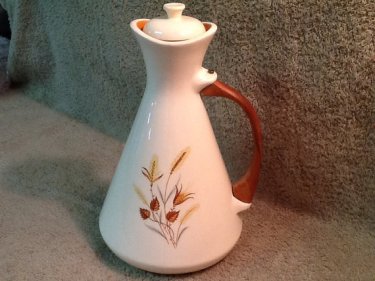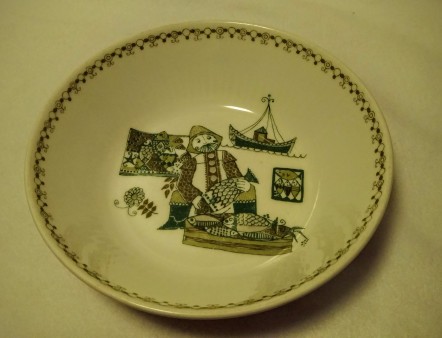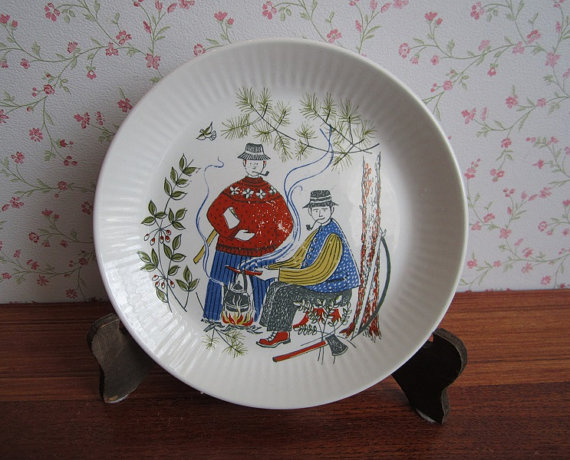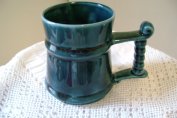Raise your hand if you have ever heard of Florence Ceramics. A few months ago, I would have left my hand at my side, too.

But then I found this little sweetie to the left at a thrift shop, and decided to find out where she came from.
Who is Florence anyway? Since the name on the company is Florence Ceramics, there had to be a Florence.

According to Kovels website, Florence was Florence Ward. She created colorful figurines, candle holders and knickknacks for the gift trade.

Her body of work was mainly from the time of WWII to the 1960s. The International Ceramics Directory writes that she began her company as a hobby when her youngest son died. In order to combat the sadness she felt at his passing, she joined a hobby class in ceramics. She became an assistant at the school because she was that good.

Then in 1942, her oldest son went into the Marines and her husband took a government job that kept him really busy. This prompted her to throw herself into her work and that is when Florence Ceramics started.

She is best known for her stylish figurines that were dressed in 19th century clothing. Her pieces were stamped “Florence Ceramics Co.” or “Florence Ceramics Pasadena California” and sometimes “Florence Ceramics Copyright.” She was copied a lot by other companies.

In 1964 the company was sold but they kept the name. The products produced however, were very different. The new company made mugs, cups and trays (Kovels).
Her techniques of fine painting and high-gloss finishes have been duplicated the world over and continue to be used today.

I hope you have enjoyed learning about the origins of Florence Ceramics with me. If you have a chance, leave me a message or visit my shop, Vintage Eve’s and have a poke around at the vintage treasures I have found for you.
I like to party at Adirondack Girl @ Heart!





































